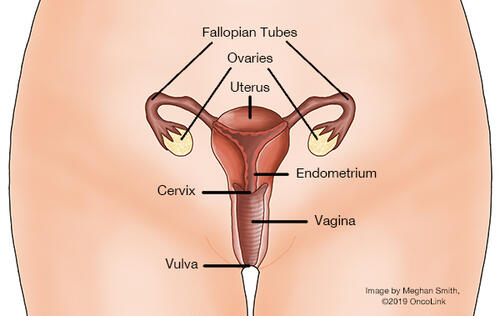INTRODUCTION
The cervix is the part of the uterus at its lower end and connects the uterus and the vagina. It opens up during childbirth to allow the delivery of the baby. It allows the passage of sperm into the uterus and fallopian tube and allows menses out of the uterus.
Cervical cancer is the second most common cancer among women. Worldwide 500, 000 women are diagnosed annually with a death rate of about 300, 000 women. In Nigeria, about 9, 000 women die yearly from the disease with about 14, 000 new cases diagnosed every year.
SYMPTOMS
Most cases of early-stage cervical cancer do not present with any symptoms. Cancer grows on the cervix and extends downwards from the cervix to the vagina, sideward to the surrounding structures such as the bladder, rectum, and kidney and upwards to the uterus. Most of the symptoms are due to increasing growth and spread to other organs.
Early symptoms due to growth on the cervix include bleeding after sex, bleeding in between menses, fresh bleeding after menopause and bleeding after a vaginal examination by a healthcare provider. As the cervix gets eroded and infected vaginal discharge which is offensive is noted.
As cancer spreads and metastasizes to the side of the vagina spread to the ureter which drains the bladder of urine results in difficulty passing urine or passage of bloody urine with damage to the kidney; spread to rectum causes constipation and over time weight loss.
Distant spread of cancer to:
- the bone can cause weakness of the legs and the bones to fracture without an accident [pathological fracture]
- the lung can cause chest pains, persistent cough, coughing up blood and difficulty breathing
- the liver can cause loss of appetite with nausea, swelling of the abdomen, extreme tiredness, yellowness of the eyes and itchy
CAUSES
Cervical cancer has been linked to infection with the Human Papillomavirus [HPV] which infects the basal cells of the cervix. HPV is the commonest sexually transmitted infection with about 80 – 90% of women getting infected with it during their lifetime. Women get infected with the virus during intimate sex; however, most cases of infection are neutralized by the body’s immune system within a few years. The persistence of HPV infection in some women over the years could lead to cervical cancer if undetected by routine screening.
Other factors that increase the risk of developing cervical cancer include having sex at an early age, smoking cigarettes, having multiple sexual partners, having many pregnancies, long term use of oral contraceptives, HIV positive women.
PREVENTION
Cervical cancer is a largely preventable condition. Primary prevention is achieved through HPV vaccination, while secondary prevention is achieved through screening.
HUMAN PAPILLOMAVIRUS VACCINATION
In the last decade, vaccines were developed which targeted about 70% of the cancer-causing strains of HPV. Vaccination with the vaccine before the initiation of sexual activity provides the best protection for the girl. The vaccines are also expected to protect against 75% of anal cancer, 62% of vaginal cancer, 45% of vulvar cancer and about 20% of oral cancers. These cancers are partly caused by some strains of HPV.
Ladies between the ages of 9 – 45 years are encouraged to take the vaccine.
DIAGNOSIS
- PAP [PAPANICOLAOU] SMEAR
It is a cervical screening test where your doctor collects cells from your cervix [squamocolumnar junction] and smears it on a glass slide before applying a fixative and then sending it to the pathologist for review.
Routine Pap smear testing has reduced the incidence of cervical cancers significantly because women with precancer lesions can get treated on time.
- HUMAN PAPILLOMAVIRUS [HPV] TESTING
HPV testing is now primary testing for infection. It checks for infection with cancer-causing strains of HPV. It is not commonly available in Nigeria for testing.
III. VISUAL INSPECTION WITH ACETIC ACID [VIA] OR VISUAL INSPECTION WITH LUGOL’S IODINE [VILI]
In low resource settings without wide-scale availability of labs and pathologists to read results of Pap smear, Visual inspection with acetic acid or Lugol iodine are used. This involves staining the cervix with 5% acetic acid and visually observing it for precancer lesions.
The challenges of these tests are interobserver bias, their low sensitivity between 47 – 60%. This means they will only detect about one-half of persons with the lesion and the other half with the disease will be told they were okay.
- COLPOSCOPY AND BIOPSY
Colposcopy and biopsy involve examining the cervix with a magnifying glass and taking a sample from an abnormal area for testing in the laboratory if a woman has an abnormal Pap smear and a positive HPV test.
TREATMENT
TREATMENT FOR PRECANCER STAGES
Abnormal cells on the cervix are termed CIN [Cervical Intraepithelial Neoplasia] and are usually removed or destroyed.
These treatments are as good as 95 % effective in curing precancer lesions and include:
- CONE BIOPSY: Removing an area that contains the precancer lesion
- LASER ABLATION: Uses laser technology to burn the area of the cervix with the abnormal cells.
- CRYOTHERAPY: Uses carbon dioxide or nitrous oxide to freeze and destroy the abnormal cells.
- LOOP ELECTRICAL EXCISION OF THE TRANSFORMATION ZONE: Involves using a hot knife to excise the diseased portion of the cervix
WHEN TO SEE A DOCTOR
If you have a daughter who is 9 years or older and has not taken her HPV vaccine, you can book an appointment with your doctor to discuss the HPV vaccine schedule.
- If you are above 25 years and sexually active, you should have a cervical smear every 3 years. You can book an appointment to see your doctor if you have not done a Pap smear recently.
- If you have any abnormal vaginal discharge/bleeding, you should make an appointment with your doctor.
- If you are past the age of menopause and start bleeding again, kindly see your doctor.

